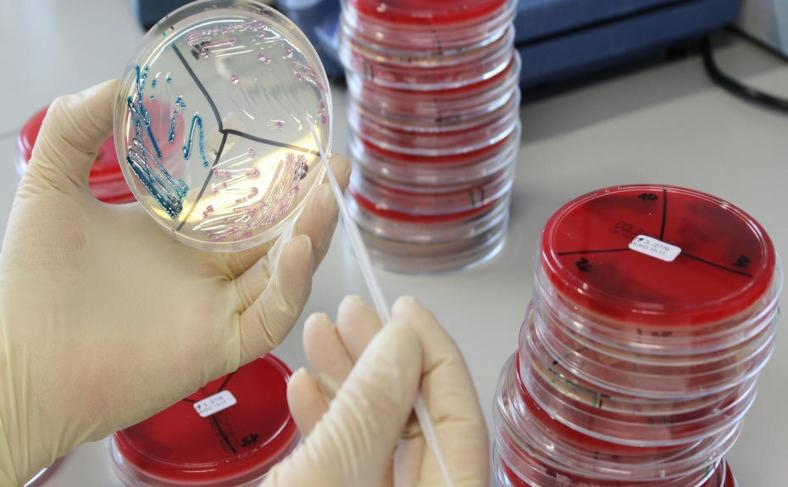Infection Diagnostics and Molecular Epidemiology (IME)
Head of working group: Dr. Antina-Lübke-Becker
The focus of the Infection Diagnostics and Molecular Epidemiology working group is an infection diagnostics laboratory that offers high-quality diagnostic services for the clinics and institutes of the department as well as for practicing veterinarians and pathologists. The employees specializing in clinical microbiology process samples from a wide range of animal species using internationally recognized standard diagnostic methods for identification and resistance determination as well as innovative techniques such as MALDI-TOF and offer a wide range of PCR tests for the identification and characterization of bacteria and DNA fingerprinting methods for outbreak analyses. The focus is on the diagnosis of bacterial and fungal infections in companion animals such as dogs, cats and horses.
The laboratory is an important interface that provides impetus for university teaching and research and is also a source of interesting bacterial isolates. Newly emerging infectious agents or new resistance patterns of bacteria can be detected and characterized at an early stage.
Both the consultation laboratories for methicillin-resistant staphylococci in veterinary practices and clinics and ESBL-producing Enterobacteriaceae in veterinary practices and clinics for small pets and horses in Veterinary Medicine, which offer comprehensive advisory services on infection prevention and the appropriate use of antibiotics, as well as the research focus of the working group: "Zoonotic and multi-resistant infectious agents" are direct spin-offs of the infection diagnostics laboratory.
In various sub-projects, questions on the epidemiology, population structure, evolution and host specificity of methicillin-resistant staphylococci and Clostridium difficile are addressed. Classical molecular typing methods such as pulsed-field gel electrophoresis (PFGE), multi-locus sequence typing (MLST), microarray hybridization (MH), spa-typing and whole-genome analyses using next-generation sequencing and functional expression studies in serum models are used. In addition, measures are being developed to combat the increasing spread of nosocomial pathogens in clinical facilities for companion animals.
